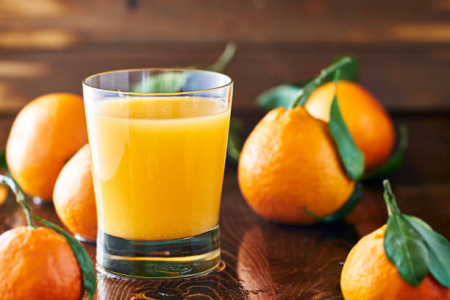A breakfast staple is declining in the market—should you be worried?
By
- Replies 33
We cherish the simple pleasures of life, and one of our beloved morning rituals is enjoying a glass of orange juice.
This refreshing start to the day, rich in Vitamin C, brings a taste of summer all year round. It's a small but significant part of our daily routine that brightens our mornings and fuels our day.
However, this tradition might be at risk. The global orange juice supply is facing a severe crisis, one that could impact our breakfast tables.
Around 50 million tonnes of oranges are harvested annually. Brazil, the world's largest producer, is responsible for 34 per cent of this production and 70 per cent of the global supply.
However, Brazil's orange groves have been severely impacted by a series of unfortunate events.
Extreme drought and heat stress during the flowering period, combined with the spread of citrus greening disease—an incurable bacterial infection—have significantly damaged the crops.
The forecast is grim, with predictions of a 24 per cent drop in Brazil's orange production for the 2024–25 season, marking the smallest harvest since the late 1980s.
Other major orange-growing regions, such as Florida, Israel, Spain, and Argentina, are also experiencing declining production, further contributing to the overall decrease in orange juice supply.
Despite this, strong demand means we still depend heavily on imports of frozen orange juice concentrate for roughly half of the consumption. Around 80 per cent of these imports originate from Brazil, with about 10 per cent coming from Israel.
Australian consumers have not yet experienced the impact as those in Europe and the United States, as local orange growers have been able to bridge the supply gap in the market.
However, Aussies’ heavy dependence on orange concentrate from Brazil is likely to eventually result in a supply shortage in the country.
Frozen concentrated orange concentrate is a key ingredient in not only the more affordable retail juices but also in a variety of commercial products.
However, a shortage of this product could mean supply disruptions and price hikes across these sectors.
In the face of this citrus crisis, consumers and producers might turn to alternatives. Blended juices combining orange with apple, mango, or pineapple could become more popular due to their cost.
Mandarins, with their similar taste and nutritional profile, might also emerge as a promising substitute.
The worldwide shortage presents an opportunity for Australia's domestic sector. By ramping up local manufacturing and export efforts, we stand to benefit from the present circumstances.
However, Australia’s citrus industry faces its own challenges, including rising production costs, competition from imports, and the market dominance of major supermarket chains.
There's no easy solution, but there are steps to bolster the resilience of Aussie’s citrus industry.
Investing in automation could reduce reliance on labour and reduce prices. This means subsidies for small and medium-sized growers are needed to adopt such technologies.
Growers could also diversify their sales strategies, such as exploring direct-to-consumer avenues, farmer markets, and collaborative marketing.
Another strategy is to expanding fruit-processing facilities, and securing better access to international markets should be a priority.
Lastly, with climate change threatening to disrupt agriculture, it's crucial to invest in research for climate-resilient orange varieties, renewable energy sources, and education programs for growers.
In a previous story, a Queensland woman took her love for it to the extreme by creating an entire diet around it.
Experts have raised concerns about this unique diet. See what they have to say on the matter here.
 Do you frequently drink orange juice? Do you use oranges as a key ingredient for something else? Share your experiences in the comments below.
Do you frequently drink orange juice? Do you use oranges as a key ingredient for something else? Share your experiences in the comments below.
This refreshing start to the day, rich in Vitamin C, brings a taste of summer all year round. It's a small but significant part of our daily routine that brightens our mornings and fuels our day.
However, this tradition might be at risk. The global orange juice supply is facing a severe crisis, one that could impact our breakfast tables.
Around 50 million tonnes of oranges are harvested annually. Brazil, the world's largest producer, is responsible for 34 per cent of this production and 70 per cent of the global supply.
However, Brazil's orange groves have been severely impacted by a series of unfortunate events.
Extreme drought and heat stress during the flowering period, combined with the spread of citrus greening disease—an incurable bacterial infection—have significantly damaged the crops.
The forecast is grim, with predictions of a 24 per cent drop in Brazil's orange production for the 2024–25 season, marking the smallest harvest since the late 1980s.
Other major orange-growing regions, such as Florida, Israel, Spain, and Argentina, are also experiencing declining production, further contributing to the overall decrease in orange juice supply.
Despite this, strong demand means we still depend heavily on imports of frozen orange juice concentrate for roughly half of the consumption. Around 80 per cent of these imports originate from Brazil, with about 10 per cent coming from Israel.
Australian consumers have not yet experienced the impact as those in Europe and the United States, as local orange growers have been able to bridge the supply gap in the market.
However, Aussies’ heavy dependence on orange concentrate from Brazil is likely to eventually result in a supply shortage in the country.
Frozen concentrated orange concentrate is a key ingredient in not only the more affordable retail juices but also in a variety of commercial products.
However, a shortage of this product could mean supply disruptions and price hikes across these sectors.
In the face of this citrus crisis, consumers and producers might turn to alternatives. Blended juices combining orange with apple, mango, or pineapple could become more popular due to their cost.
Mandarins, with their similar taste and nutritional profile, might also emerge as a promising substitute.
The worldwide shortage presents an opportunity for Australia's domestic sector. By ramping up local manufacturing and export efforts, we stand to benefit from the present circumstances.
However, Australia’s citrus industry faces its own challenges, including rising production costs, competition from imports, and the market dominance of major supermarket chains.
There's no easy solution, but there are steps to bolster the resilience of Aussie’s citrus industry.
Investing in automation could reduce reliance on labour and reduce prices. This means subsidies for small and medium-sized growers are needed to adopt such technologies.
Growers could also diversify their sales strategies, such as exploring direct-to-consumer avenues, farmer markets, and collaborative marketing.
Another strategy is to expanding fruit-processing facilities, and securing better access to international markets should be a priority.
Lastly, with climate change threatening to disrupt agriculture, it's crucial to invest in research for climate-resilient orange varieties, renewable energy sources, and education programs for growers.
In a previous story, a Queensland woman took her love for it to the extreme by creating an entire diet around it.
Experts have raised concerns about this unique diet. See what they have to say on the matter here.
Key Takeaways
- Brazil's orange production is expected to decline by more than 24 per cent due to drought, heat stress, and citrus greening disease, leading to a global orange juice supply crisis.
- The shortage of orange juice concentrate could impact not only the price of retail orange juice but also products across different sectors that use orange concentrate as a key ingredient.
- To combat this and future supply shocks, Aussies’ citrus industry may benefit from investment in automation, diversification of sales avenues, and more local processing facilities.








